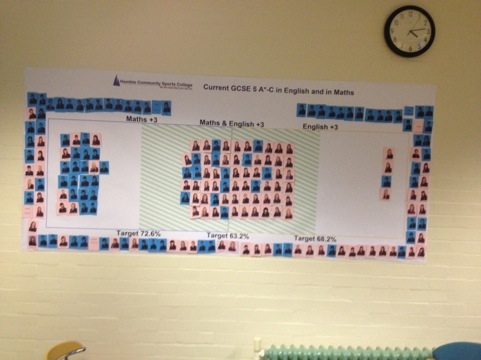 Attitude to learning scores, are they part of your whole school data collection? Why are they part of your assessment procedures?
Attitude to learning scores, are they part of your whole school data collection? Why are they part of your assessment procedures?
Well I am not in a position to change the WHY we collect ATL grades, we just do, so I sought out to find out WHAT we could do with this information to impact of student progress and achievement at our school. Unsurprisingly, it raised more questions than answers.
- What are these grades called?
- How are they defined? What criterion are used to define a student’s ATL? The quality of the students learning? The degree to which the student engages in the learning? Engages with your teaching? Completing extended learning or homework? Attending extra-curricular provision? Does attendance and punctuality some how figure into it? (If you have contributed to that Middle Leadership meeting it is an arduous experience.)
- How are staff supported in making their assessments? Do you collect ATLs for all subjects or just core?
- Do you use values, scales or key terms?
- What do schools do with this information?
Sooner or later you will no doubt have to define it, define it, in order to assess it. In order to send a report home. In order to hold a converastion with parents and carers about a students attitude to learning. Which lead me to question, ‘What does How does a 1 ATL student learn?’ What does an 1 ATL look like in the class? In the end I had more questions than answers, though I did retain a clear motivation for exploring this further.
Last year a very supportive parent asked what our school did to recognise the ‘silent majority,’ of good students. Not the stella academics, nor the significant leadership role (Head-boy or Head-girl) but the cluster of dedicated students that fulfilled their role without issue, politely, diligently and conscientously. She described her daughter, her commitment to the school. Her exemplary attendance, unblemished behaviour record and accomplished academic profile. She then ask me ‘how does the school recognise my daughter’s contribution?’
After the top awards for 100% attendance (which she was eligible for) I didn’t really have an answer. The next step down was a school postcard, merit and comment in her books. It left me thinking. This Septempber I thought that making better use of the ATL scores might be my answer. An answer that has taken me nearly 10 months to formulate and three months to calculate and present.
Step 1 – Assess and collect the data.
We collect ATLs every data collection, three times a year, per year group. There has been in the past, vicious debate on what scale to use and the definitions of each value and criterion. Three points I would recommend are;
- Levels or scores are accumulative; 1 low, 3 average and 5 high. As you can see below ours are not currently accumulative and it causes a little confusion for parents and carers
- The criteria is boomeranged. Generated through Middle Leaders, through the staff and back to Senior Leaders.
- The criteria reflects or sits within the current whole school policies – eg the Behaviour Policy and Rewards Policy.
| Grade | Description |
| 1 | The student has demonstrated an excellent attitude to learning. He/she has consistently met or even exceeded expectations in the work undertaken to date. The student consistently works at his/her ‘personal best’. |
| 2 | The student has generally shown a good attitude to learning. Usually he/she is working near to the peak of his/her potential, although there may be some exceptions to this. |
| 3 | The student’s attitude to learning is only sound based on the evidence of the work produced so far. There is room for improvement. |
| 4 | The student demonstrates a poor attitude to learning with limited effort to his/her work. Work is below an appropriate standard for the ability of the student. The student is under-achieving. |
| 5 | The student shows a very poor attitude to learning with very little effort with his/her work. Work is significantly below an appropriate standard for the ability of the student. The student is significantly under-achieving. |
A quick online search reveals plenty of schools pursuing the same aim, Royds Specialist Language College, or Wymondham College or Cowplain Community School. Be it Attitude or Behavior for Learning, it is one and the same thing.
Step 2 – Interrogate the data. Discuss the data and its findings. Prepare, share, and communicate the data.
Going back to my statistics classes at SIUE, I worked with deviations, confidence intervals and regression models. I wanted a method that was simple to understand and easy to communicate, as well as applicable to all cohorts. Working with CAT data I learnt about the use of Stanines (Standard Nine Deviations – are normally distributed scores on a 1-9 range, in set intervals. 9 very high, 8, 7 above average, 6, 5, 4 average, 3, 2 below average, 1 very low.). I read online, followed a few Youtube statistics tutorials and read an odd research papers here and there.* The details are not important here, if they are to you, then get in touch.
So I interrogated the data, calculated the 9 bands and took what I had to our Community Leaders and meet with our Directors of Progress. We discussed how we could use the bands to a) recognise good behaviour and engage with parents and carers, and b) challenge poor behaviour and engage with parents and carers. We were, after all, no longer dealing with isolated incidents, or single subject success, we were basing our conversations on whole school learning communications.
The data was prepared and shared with key staff, (which turn out to be almost everyone) each with a different vested interest in the information; from Community Leaders to Directors of Progress, from Curriculum Leaders to Mentors and students.
Now the really hard work began. Making the data work for the us.
All the documentation you will need to calcualte your own ATL / Effort / #Whateveryoucallthem grades, I will attach to part 2. Not in an effort to get you to read part two, it’s just easier.
Comparing the predictive validity of reasoning tests and national end of Key Stage 2 tests: which tests are the ‘best’? Steve Strand (2006)*
Image: Adidas Jeremy Scott Metro ‘Attitude’ Hi -tops – Grey Blue
[qr_code_display]


